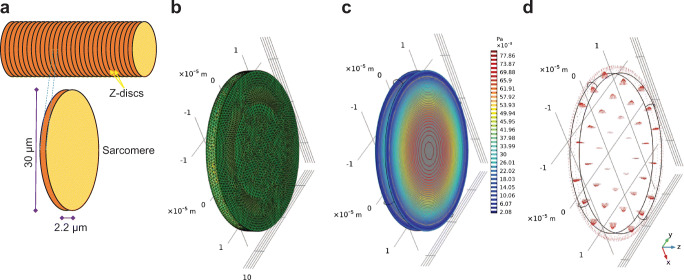Fig. 3.
A COMSOL program was designed to mathematically simulate the advection of an arbitrary molecule A, floating in one sarcomere of a CM towards the sarcolemma. The advection is due to contraction of CM. For a CM to contract, the sarcomere must shorten from 2.2 to 1.6 μm. a One CM was assumed as a cylinder, consisting of several symmetric sarcomeres. Since sarcomeres are similar repeating units, one contracting sarcomere was modeled. Moreover, it was assumed that the liquid inside the sarcomere is incompressible. b The finite-element mesh was generated to divide the model into small elements, over which a set of Navier-Stokes equations were solved. c When the sarcomere contracts, the pressure from the liquid is exerted to the contracting z-disks. The exerted pressure in different parts of the z-disk is shown by color-coded contours. d The arrows are the velocity vector (advection), caused by shortening the sarcomere. The arrow length is proportional to the magnitude of velocity

